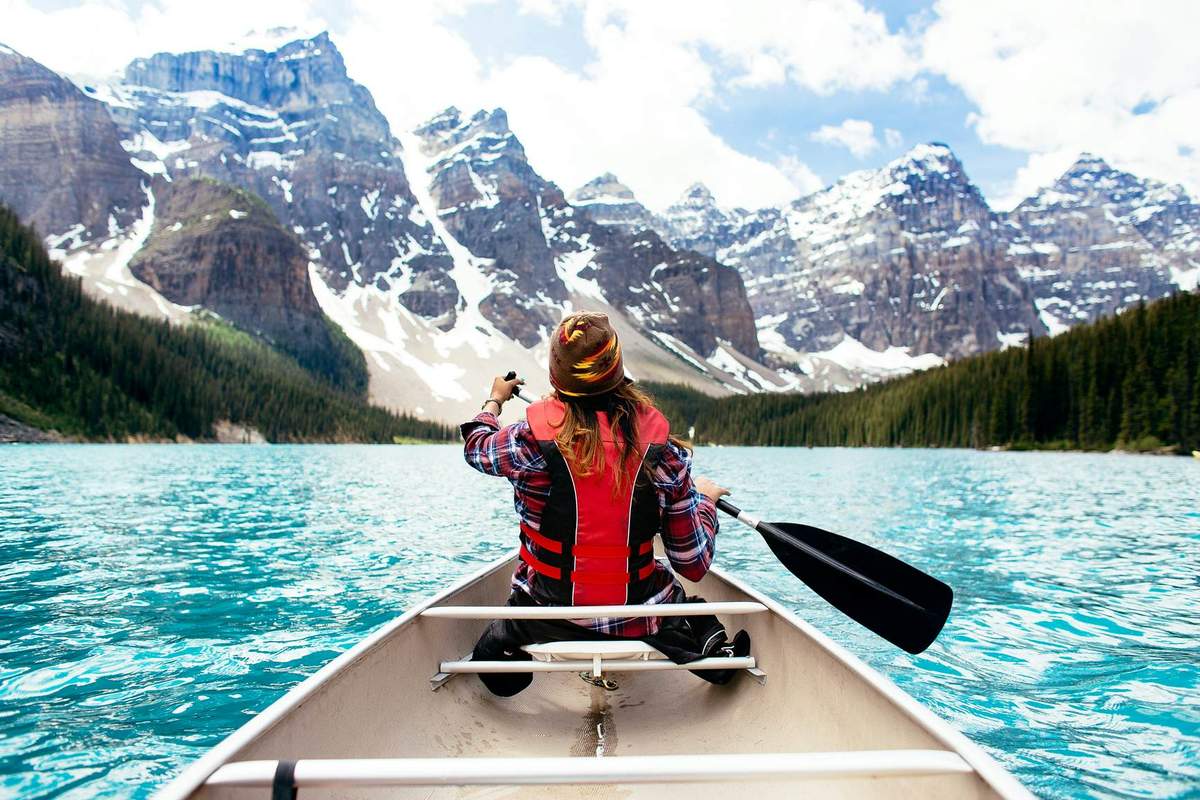

From cycling to streetcars, Toronto has a lot of options for getting around © kate_sept2004 / Getty Images
Exploring on foot is a great way to experience a new place. However, in a city as big as Toronto where the different neighborhoods and attractions are fairly spread out, you might need a little help that will give your feet a rest. Toronto might be one of the most exciting and diverse metropolitan destinations in the world, but that doesn’t mean it’s easy to get around!
Toronto has a public transportation system that combines buses, streetcars and a subway, which are run by the Toronto Transit Commission (TTC). The routes are extensive and affordable, and while some locals love to complain about it, Toronto has the top-ranked public transit system in Canada. You can also get around by taxi, ride-hailing apps, ferries, car and bicycle.
Here’s everything you need to know about getting around Toronto.

Travel like a local on Toronto's buses and streetcars
Public transit is the cheapest way to get around Toronto and the city has an extensive network of buses and streetcars. However, thanks to the notorious Toronto traffic, they can often be incredibly slow methods of travel, especially during the morning and evening rush hours. For this reason, it’s best to use buses and streetcars outside of peak times.
During the day, buses and streetcars operate most major routes every 30 minutes or so. For overnight travel, the Blue Night Network runs between 1:30am and 5:30am, and stops are marked with a blue reflective band. Toronto’s buses also offer a request stop option between 9pm and 5am where the bus can let passengers off as needed between designated TTC stops.
Push the button (or pull the cord on older street cars) to request a stop. Cash is accepted for fares on buses and streetcars, but they don’t offer change. Prepaid transport passes offer more bang for your buck.
Use the subway to skip traffic
Toronto's subway system is the fastest and best way to get around town, but with only four lines, it’s not nearly as connected as options above ground. The subway operates daily with service every few minutes, but it closes overnight. From Monday through Saturday, the subway runs from approximately 6am to 2am. On Sunday, the schedule starts around 8am.

Transport passes in Toronto
Toronto public transit tickets, tokens and passes are slowly being phased out in favor of the Presto card. Purchase Presto cards at fare vending machines at all subway stations. You can purchase a one-ride, two-ride or day-pass Presto ticket. If you pay your fare using a Presto card or ticket, you get a two-hour window to enter and exit the TTC as many times as you like. This money-saving bonus doesn’t apply if you’re paying in cash.
Presto cards can be purchased for $6 and loaded with whatever amount you like. These cards are available at all Shoppers Drug Mart locations in the city as well online and at the TTC Customer Service Centre.
You can see Toronto by car, but it's probably not worth the stress
It's possible to rent a car or drive your own in Toronto, but we don’t recommend it. On top of traffic gridlocks, you need to be mindful of streetcar stops, pedestrians and cyclists. Driving in Toronto can be stressful, and with all the public transit options, you don't need a car to get around the city. Parking can be difficult to find, and most parking is in paid lots. Parking rates are usually charged every 30 minutes and start at $2 but can go as high as $4. Free parking is very limited in Toronto, even on weekends.

Visit the Toronto Islands by ferry
To visit Toronto Islands, take the ferry. There are three main islands to visit, all of which are connected so you can walk between them. Ferry schedules vary by season. In the winter, the ferry makes trips only to Ward’s Island rather than all three. The ferry schedule runs from 6:30am to 11:30pm every 30 to 60 minutes daily. All ferry tickets are return trips, and you don’t need to worry about showing your ticket on the way back.
Get around with taxis, Uber and Lyft
Taxis, as well as ride-hailing apps like Uber and Lyft, are available in Toronto. Most hotels and major attractions have a taxi queue, or you can hail one on the street. The further out of the city you go, the more likely it is you’ll have to call a cab company. The basic taxi fare in Toronto is $4.25 plus $1.75 per kilometer. Uber and Lyft prices depend on the routes and time of day. Credit cards are widely accepted by drivers, and tipping is common practice in Toronto, though it's at your discretion. About 10% to 15% is typical.
Taxis and ride-hailing apps are not immune to Toronto traffic, and traveling during rush hour makes for long (and expensive!) rides.
Take the scenic route and rent a bicycle
Renting a bike is also an option for exploring Toronto. While not an ideal year-round option, biking around the city can be a great way to see it during the warmer months. Companies along the waterfront offer half-day and full-day rentals (we recommend Wheel Excitement), and Toronto has a bike share program. These bikes are available 24/7 and can be found across the city. Rates start at $3.25.
Renting a bike is best for exploring the waterfront area. Designated bike lanes can be found around the city, but it can be stressful given the heavy traffic. Bicycles are allowed on public transit during non-peak weekday hours (10:30am-3:30pm and 7pm-6:30am) if space permits, and at any time on weekends at the discretion of the driver.
Accessible travel in Toronto
Toronto streetcars offer accessible features such as low floors and accessible stops. Look for the blue International Symbol of Access displayed on the side of the streetcar, at the second door. These streetcars also have blue lights on the front. Keep in mind that not all stops are accessible, so you may not be able to get on or off exactly where you like.
All city buses are also wheelchair accessible; however, not all stops are.
Toronto’s subway system is still lacking in accessible transportation options. Only about half of the city’s stations are wheelchair accessible, making this method the most difficult option for travelers with mobility issues. All methods of Toronto public transit have visual and audio announcements.
















